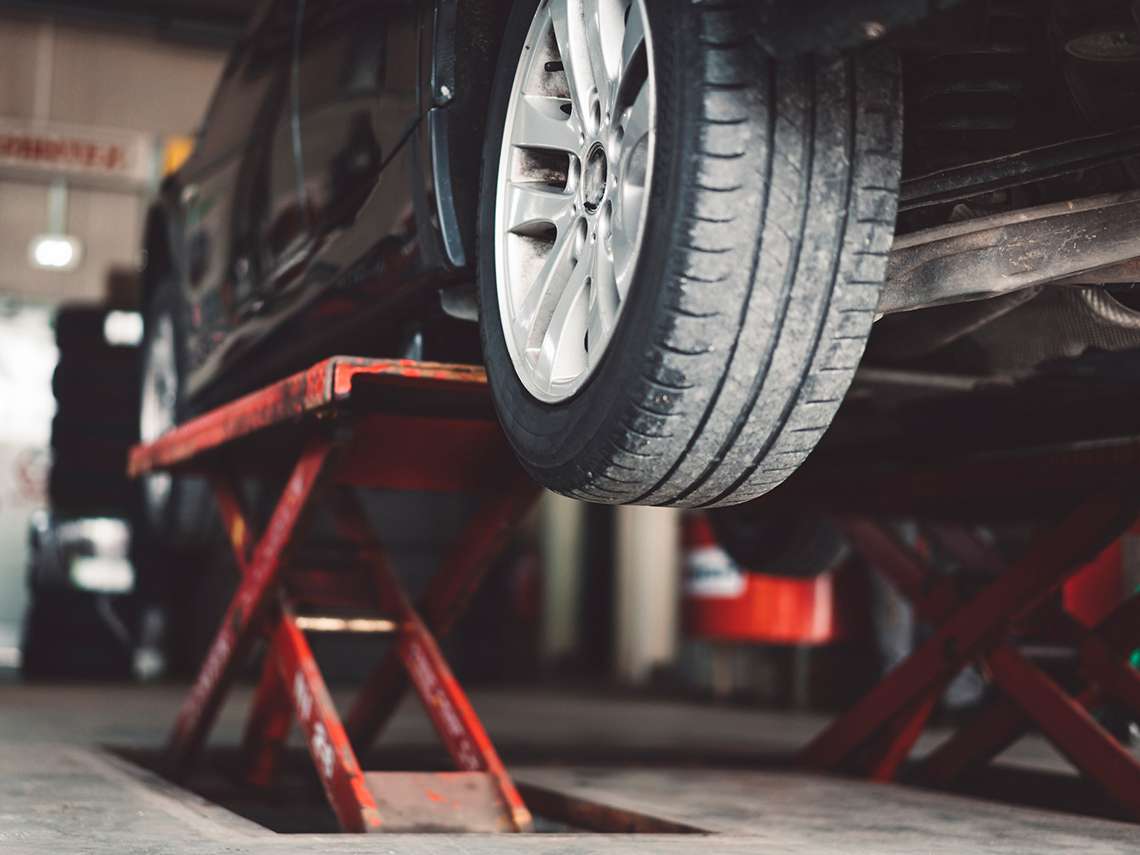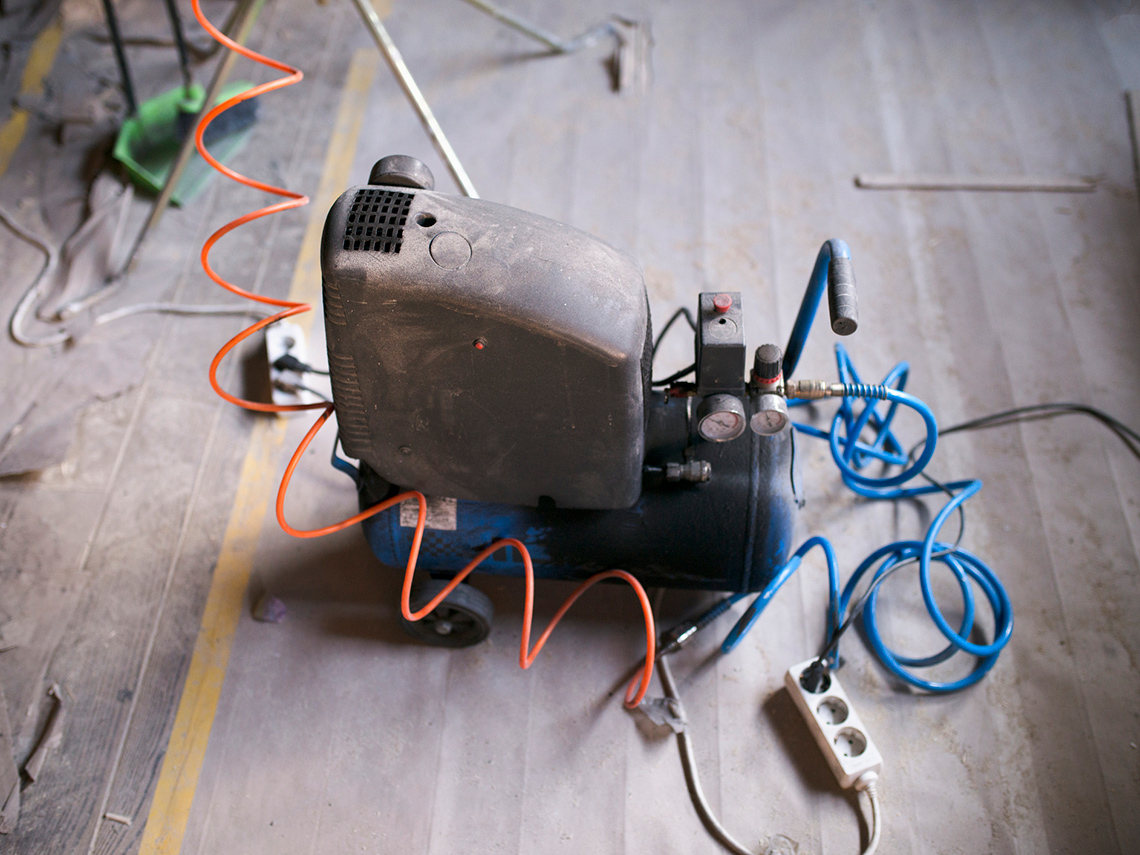Minds On
Notice and wonder
The mechanics of everyday objects rely on systems that use either the pressure of moving air or moving liquids to operate. Explore the following images, and consider what is involved in making these different objects move.
- What observations can you make?
- What questions do you have?
- How do you think these images are connected?
Record your thoughts using a method of your choice.
Action
Fluid power systems
Fluid power systems are systems that use either gas or fluids to transmit a force and do work. There are two main types of fluid power systems: hydraulic and pneumatic.
Hydraulic
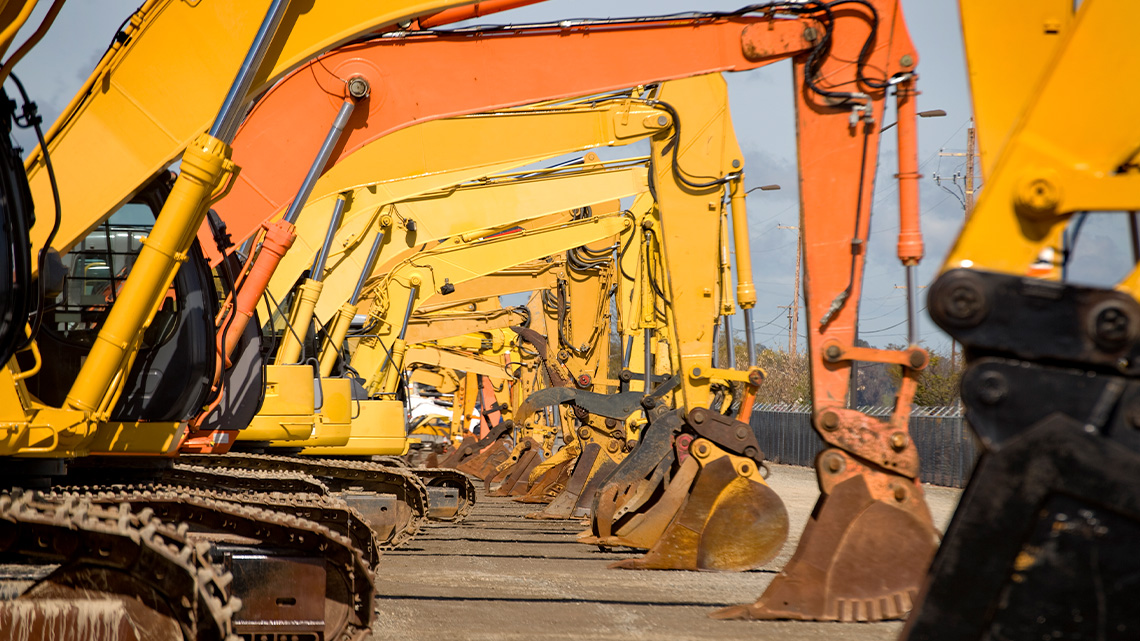
Hydraulic systems are systems that use liquid under pressure to transmit a force and do work. A hydraulic system is made of various components. Hydraulic systems require:
- a liquid, often water or oil, called hydraulic fluid
- pumps that push the liquid through the system
- valves that control the flow of the fluid in the system
A hydraulic system is a closed system, which means that the fluid is constantly circulated throughout the system, rather than used up. Some everyday examples of hydraulic systems are: a dentist’s chair, a hairdresser’s chair, the “Jaws of Life” used by fire and rescue, dump trucks, and excavators.

A hydraulic system where liquid is being pushed through the system using two pumps. Pressure exerted on the first pump pushes the liquid down the first tube and into a second, larger tube. There is an example of an excavator under the hydraulic system to represent the moving of the hydraulic pistons in the arm of the exacator using a hydraulic system.
One of the useful properties of hydraulic systems is that liquids are not compressed by usual means. This means that when pressure is applied to a liquid in a pipe or tube, the force can be transferred over a distance. This property is useful when moving fluids over long distances. This can include transporting water or oil in pipelines.
Another benefit of hydraulic systems is that they can multiply the force exerted by a liquid. A vehicle hoist uses two pistons of different sizes to create enough pressure to lift a vehicle. A piston is a disk that moves inside a cylinder. The smaller piston is called the input piston. This piston pushes down on the liquid to create pressure. This pressure is transmitted through the liquid. There, it pushes up on the larger piston.
Check your understanding
Let's review your learning by responding to the following multiple choice questions. Select the correct answer, then press “Check Answer” to see how you did.
Pneumatic
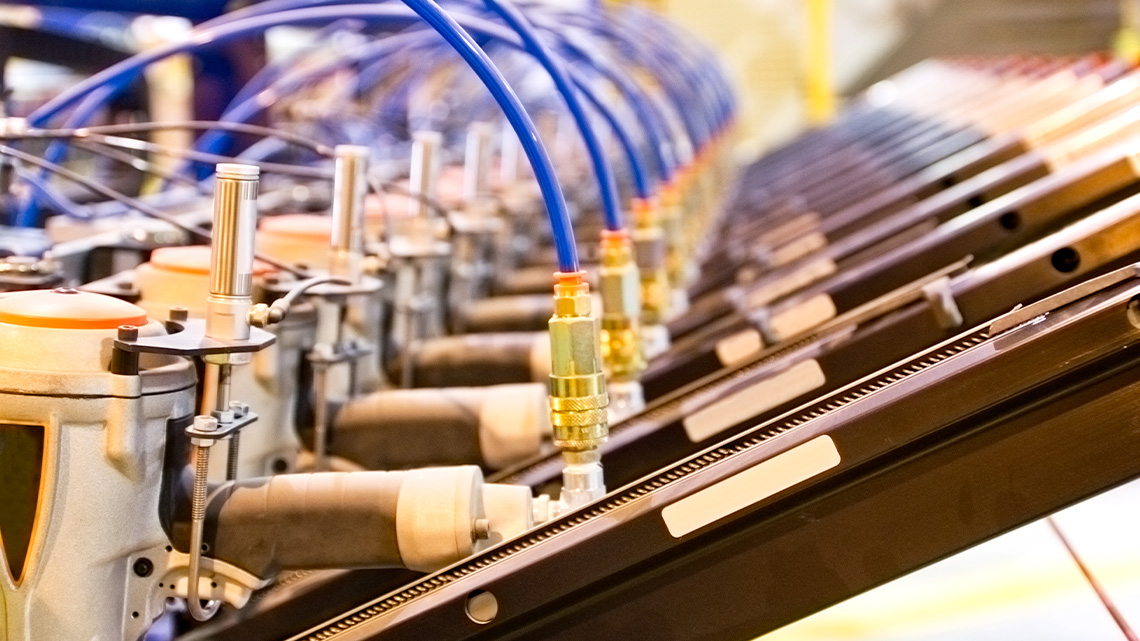
A line of air nailers fixtured on an industrial machine in a wood working factory
A series of white cylindrical air pumps, each with a brown cylindrical tube coming out of one side. There is a blue wire fastened on one end to the brown cylindrical tube and to the air pump on the other end. Each air pump system is connected to a series of brown rails.
Pneumatic systems use a gas under pressure (usually air) to transmit a force or do work. In order for gas to work, it needs to be compressed and transported through a system. An air compressor gives the supply of air in the system, similar to the pump in a hydraulic system. Two advantages of pneumatic systems are: safety and lower cost. Compressed air is safe to use as they do not create sparks inside the system.
Another advantage of pneumatic systems is that they continue to work in extreme temperatures, which is especially helpful when designing systems and devices in colder climates, such as for Canadian winters. Some real-world examples of pneumatic systems are a car lift or hoist, an automobile braking system, an air compressor, and bike tires.
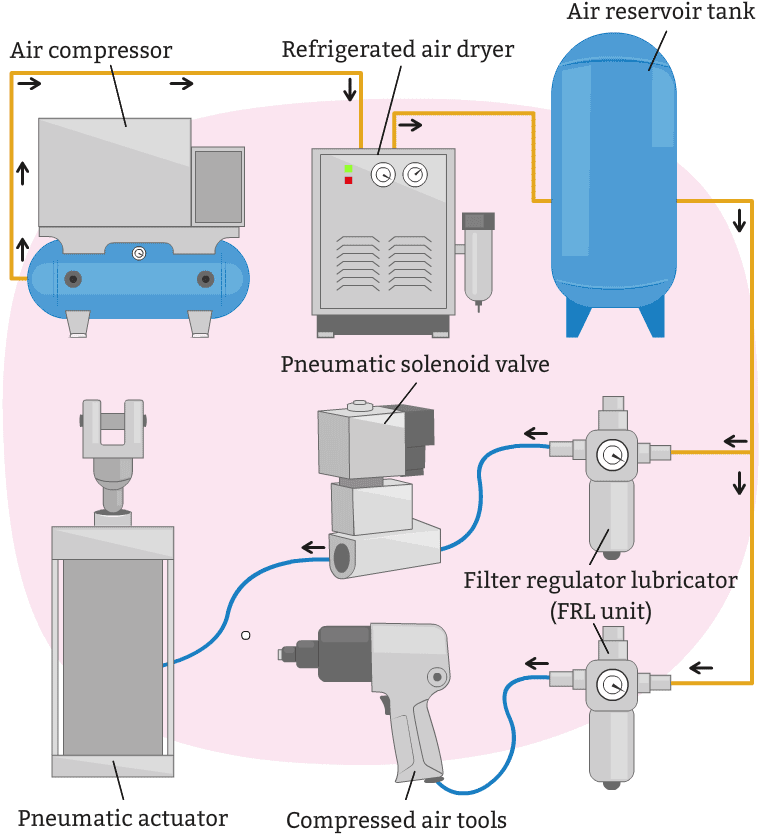 Description
Description
An animation that shows gas moving through pneumatic systems through a system of arrows moving from one machine to the next. Included in this animation is an air compressor machine, a large metal box that is a refrigerated air dryer, a large cylindrical air reservoir tan, a small cylindrical lubricator machine, a drill that is a compressed air tool, and a pneumatic actuator.
Check your understanding
Review your learning by completing the following fill-in-the-blank prompts:
For each sentence, select the missing word from the drop-down menu.
Engineering connections
All systems evolve and change over time. There are many different social factors that drive these changes and contribute to the ways that systems evolve over time. There are a few common reasons that systems evolve and change, such as: technology, social institutions, population, and the environment. Often these are all connected, meaning a change in one area could lead to other changes.
Press the following tabs to explore a few examples of how social factors evolve systems.
The telephone evolved from a wired phone to a wireless phone because people wanted to be able to contact each other all the time. Early telephones had a spring-loaded “hook” that moved up when the handset was lifted off the base to place a call or answer a call, and moved down when the handset was replaced to finish a call (or “hang up”). Eventually telephones had a circular disk called a “rotary dial.” Over time, the telephone kept developing and evolving as people relied on it more. Telephones began being used for more than just phone calls and now are used to take photographs or videos, for social media, listening to music, using maps, gaming, reading books, and more. The evolution of the telephone was driven by growth in population, need for connection, and social institutions that relied on them.

Over time, the car has also evolved. Once, cars were a big engine-powered moving wagon, and now there are sports cars, hybrid cars, trucks, SUVs, etc. Cars have been developed to be faster and safer as the population continues to grow. Not only has the type of car changed, but safety features have also evolved, such as safety glass, airbags, and seatbelts. As concern for the environment increases, electric cars are becoming more available to consumers, which represents another evolution of the car. Along with the car, planes have also evolved into safer and faster aircraft capable of going longer distances. An airplane is a faster way for people to travel and to ship goods around the world. These changes have been driven by population growth and innovative technologies.

Three cars. An antique motorized carriage with large wooden carriage wheels, gas-powered headlights, and no roof. An antique car with windshield, roof, rubber tires, and electric headlights. A modern car.
As the population grows and the concern for the environment increases, the way in which waste is managed evolves. Recycling and composting systems are evolving more and more to decrease the amount of waste that is being left in landfills. Even specific systems for the recycling of electronics, oil, or batteries have become important over the last few years. This change has been driven by a growing population and the environment.

Pause and Reflect
Pause and reflect
- What are social factors that influence the evolution of systems or products?
- Can you think of any other systems or products that have evolved over time? What were the social factors that drove these changes?
Press the following tabs to explore how these systems connect to innovations in engineering.
In manufacturing, hydraulic and pneumatic technology increase accuracy, production, quality, consistency, and cost savings. Hydraulic technology is typically used in heavy duty applications where high power is required, and pneumatic technology is used for lightweight, high speed, and lower cost applications. In a factory setting, a robotic arm is likely equipped with a pneumatic tool to facilitate clamping or holding. Hydraulics could be used to handle and grip heavy products.
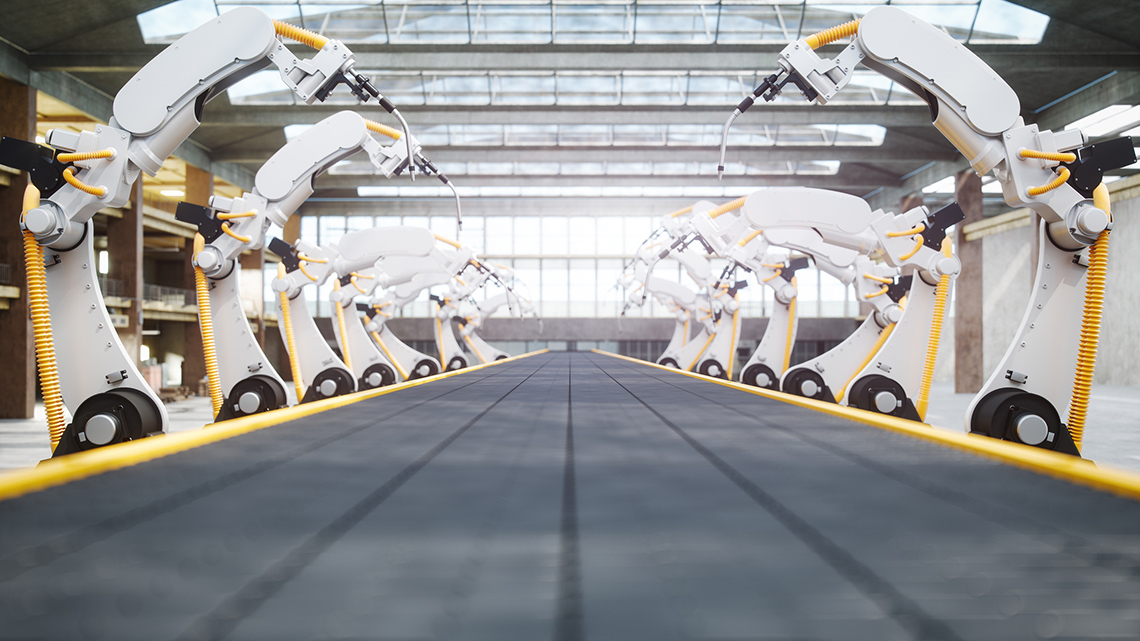
Hydraulic engineering of dams allows for successfully designed reservoirs to provide safe drinking water to communities. This also allows for hydroelectric power generation, flood prevention, and irrigation. Engineers are designing water systems that use hydraulic fluid principles to adapt to ever-changing water pressures because of the increasing risks from climate change.

When designing transportation systems (planes, trains, ships), engineers explore ways to reduce friction and increase speed and efficiency of the vehicle. A “hyperloop” is an innovative system that reduces friction using fluid dynamics and pneumatic principles. Instead of using wheels, the hyperloop uses an air compressor to deliver pressurized air to bearings, which allows movement with no friction.
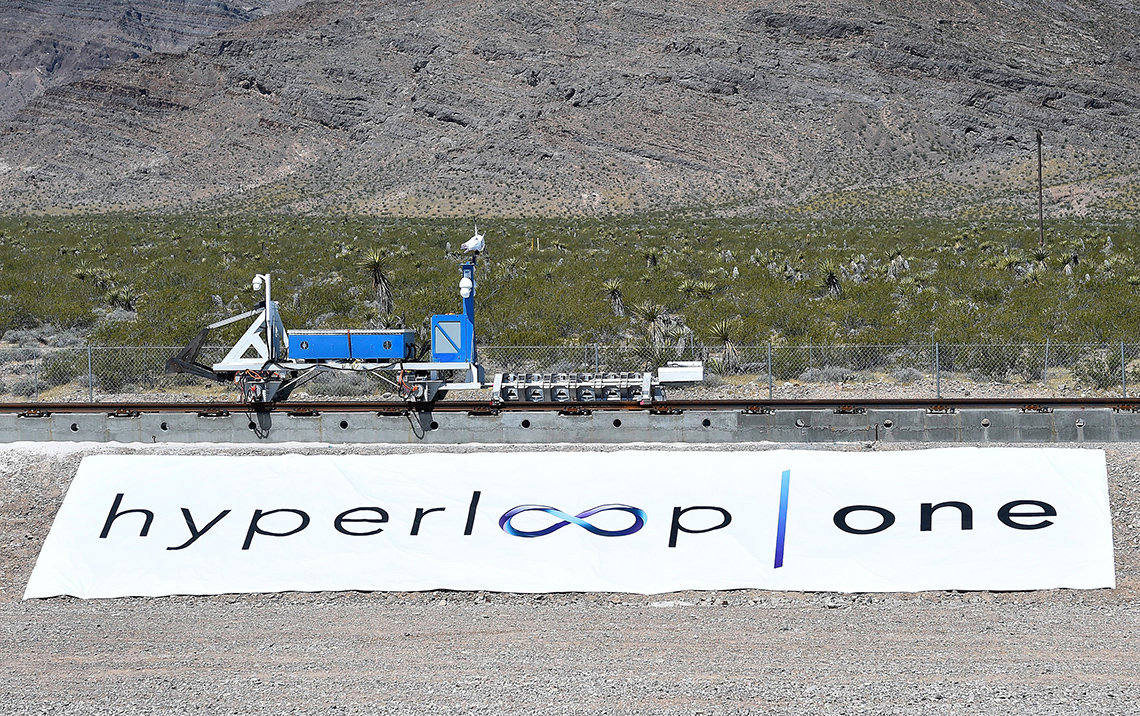
There are several medical advancements that rely on pneumatic fluid systems. One of these examples is a compressor that fills mobile devices which provide oxygen to patients who require it outside of the hospital. Patients no longer need to rely on pre-filled oxygen cylinders to be delivered, but rather patients can refill their oxygen tanks themselves, from home.

Your turn: Engineering systems
Based on your learning about hydraulic and pneumatic systems, as well as their unique connections to the world of engineering, you will be planning and, if possible, testing a design for a hydraulic or pneumatic system of your choice.
Following the engineering design process
Before beginning your design, it is important to review the different stages of the Engineering Design Process to help guide you as you work your way through this activity.
Planning your design
A pneumatic or hydraulic device is often used to lift heavy objects. Some systems use more than one hydraulic system or pneumatic system. For example, when an excavator moves dirt into a dump truck, one set of hydraulics lifts the soil into the bucket and another set of hydraulics is used to dump the soil.
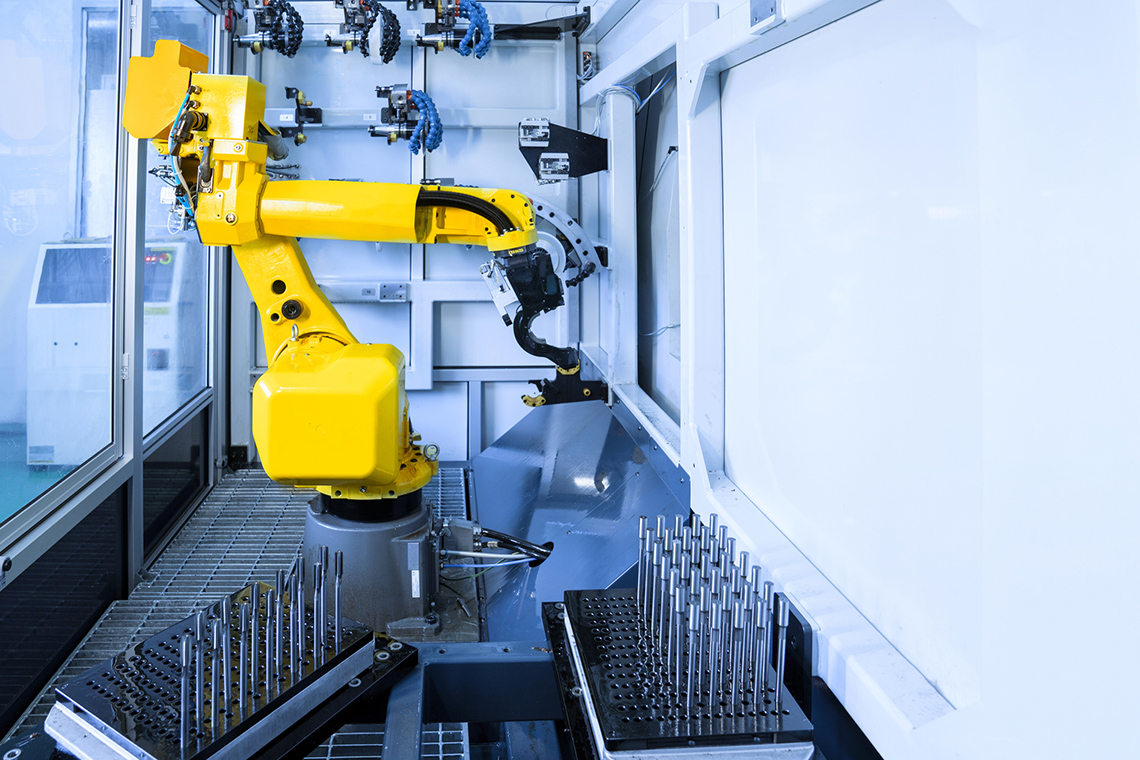
Using materials such as the plastic tubing commonly found in aquariums and a plunger syringe (the type that does not require a needle fixture), choose one of the following three hydraulic and/or pneumatic devices to design. Follow the engineering design process to design your device, and if possible, build and test your device.
Design options
- Golf Ball Loader - Design and build a hydraulic arm or pneumatic arm that will lift a golf ball vertically a minimum of 15 cm and release the ball into an empty coffee can.
- Hydraulic Hand - Design and build a hydraulic hand that can pick up as many household objects as possible.
- Treasure Chest - Design and build a hydraulic or pneumatic treasure chest - a box with a lid that lifts using hydraulic or pneumatic technology - that smoothly opens with the press of a plunger syringe (the type that does not require a needle).
Student Tips
Student tips
When designing your device, consider the materials you would use, predict how your device might function, and identify what obstacles you might encounter during the testing phase.
You may choose to plan your design using a graphic organizer such as the following fillable and printable document. If you would like, you can use speech-to-text or audio recording tools to record your thoughts.
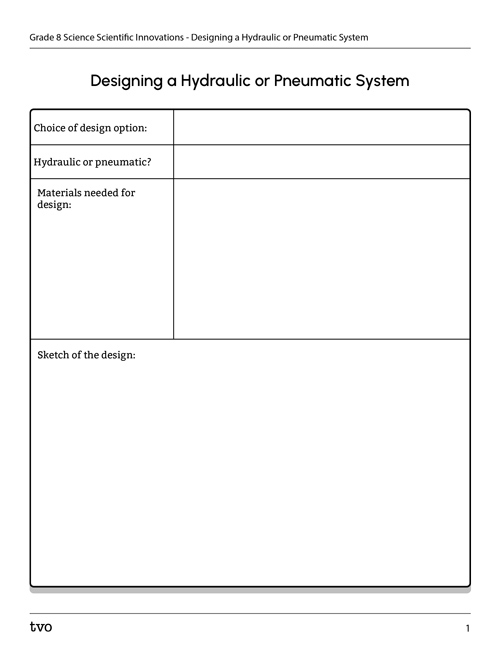
Press the Activity button to access the Designing a Hydraulic or Pneumatic System.
Activity (Open PDF in a new tab)Consolidation
Comparing hydraulic and pneumatic systems

Time to play!
Compare hydraulic and pneumatic systems using this interactive sorting activity.
Pause and Reflect
Pause and reflect
Choose one of the following questions to respond to using a method of your choice. Be sure to use evidence from your learning to support your response.
- Can you think of any uses of fluid power in your communities that were not discussed? Where are they located? How are they being used? Are they hydraulic or pneumatic devices?
- Why do engineers continue to work to improve fluid power? What areas are they looking at improving?
- What work is being done to use fluid power to improve human life? (Think: medical, environmental)
- Can you identify devices or systems that do not use fluid power that might be improved with the use of fluid power?
- Can you draw a comparison between how fluids are used and how their flow is regulated in living organisms versus in mechanical devices?
Reflection
As you read the following descriptions, select the one that best describes your current understanding of the learning in this activity. Press the corresponding button once you have made your choice.
I feel...
Now, expand on your ideas by recording your thoughts using a voice recorder, speech-to-text, or writing tool.
When you review your notes on this learning activity later, reflect on whether you would select a different description based on your further review of the material in this learning activity.


